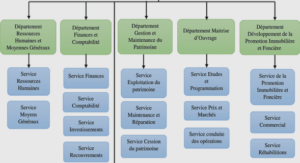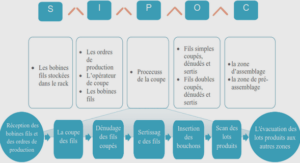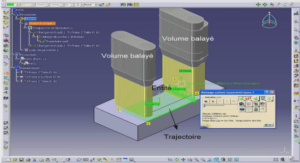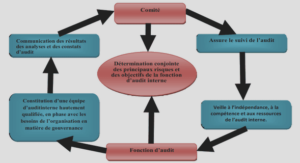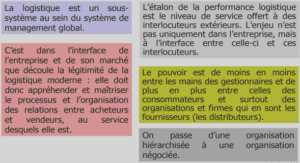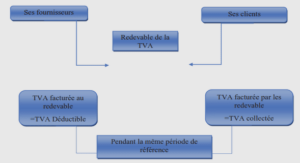Dans cette section, nous allons introduire le problème de détection d’anomalie qui a motivé cette étude. Notre travail s’inscrit dans une étude plus vaste réalisée chez Thales Systèmes Aeroportés, qui a débuté en 2010, quand a grandi l’idée d’utiliser des techniques d’apprentissage automatique pour compléter le système de détection de panne qui équipe les radars produits à Thales. Nous présenterons le problème industriel, l’équipement concerné, les données qu’ils produisent lors de leur utilisation, quel est le système de détection actuel et les motivations industrielles qui ont mené à notre étude.
Thales est un groupe mondial spécialisé dans l’aéronautique, l’espace, le transport terrestre, la sécurité et la défense. Thales Systèmes Aeroportés, appartenant à la division aéronautique, développe des systèmes qui répondent à de nombreux besoins opérationnels: systèmes embarqués, sous-systèmes, systèmes ou services complets, pour les clients militaires et civils. Dans le cadre de son expertise, cette entreprise française surveille de nombreux programmes militaires et travaille comme sous-traitant pour des programmes d’autres entreprises, comme Dassault Mirage et Dassault Rafale, deux avions de chasse français produits par Dassault Aviation. Plus précisément pour ces deux avions, Thales développe et produit certaines de ses composants électroniques, parmi lesquelles leur radar de combat, les systèmes de défense intégrés, les systèmes de gestion de vol, le contrôle de tir, les interfaces pour pilotes, les pods, les capteurs, etc.
Cette thèse répond à un besoin spécifique concernant le radar RBE2 (Radar à Balayage Électronique 2 plans), qui est le radar de combat équipant le Rafale. A de nombreux titres, il est plus performant et complexe que les radars de générations antérieures.
Un radar de combat est composé de nombreux sous-systèmes : l’antenne, le module hyperfréquence, des blocs de traitement du signal, un système de refroidissement, des interfaces avec l’avion, entre autres. Tous ces composants doivent fonctionner de manière optimale dans de nombreuses situations extrêmes, par exemple lors de fortes vibrations, des accélérations brutales, où en présence de forte humidité, fortes pressions ou températures. Ces conditions de fonctionnement peuvent causer des dégâts ou un vieillissement précoce. Pour contrôler leur état de santé, chaque radar est équipé d’un système de maintenance, appelé maintenance intégrée, qui a pour objectifs :
• Évaluer l’état de fonctionnement du radar et informer les autres systèmes de l’avion,
• Détecter et localiser les éléments en panne,
• Produire des rapports exploitables par des équipes expertes pour des investigations futures.
Thales is a worldwide group specialized in aeronautics, space, land transportation, security, and defence. Thales Airborn Systems, belonging to the aeronautic division, develops systems that answer many operational needs: embedded systems, sub systems, complete systems or services, for military as well as civil customers. Within its range of expertise, this french company supervises many military programs and works as a subcontractor for other programs of other companies, like the Dassault Mirage and the Dassault Rafale, two french fighter jets produced by Dassault Aviation. More precisely for those two fighters, Thales develops and produces some of their main electronic features, among which combat radars, integrated defence aids systems, flight management systems, fire control, interfaces for the pilots, pods, sensors, etc.
Both radars are an assembly of many components: in addition to the antenna, there is a hyper-frequency emitter, a modulator, some signal processing modules, a cooling system, an interface with the aircraft, and many other parts. All of those components are designed to work together in extreme situations, for instance when there are vibrations, brutal accelerations, high variations of pressures and temperatures, humidity or sand. These conditions can cause damages to the systems, or lead to an accelerated ageing. Thales thus has to ensure that the radars are working under such conditions, and also has to provide the tools that will make easy the maintenance and the repair when breakdowns occur.
To address this issue, both the RDY and the RBE2 are both equipped with a built-in test. The built-in test has several objectives:
• Evaluate the working state of the radar and inform the other systems of the plane,
• Detect and localise the broken down elements during the mission to make the online repairing easy,
• Produce exploitable reports for offline repairing.
To achieve those goals, the built-in test is based on three major activities:
• Collecting the raw data produced during integrated tests in the radar,
• Process those pieces of information in order to detect and localise the failures,
• Publish all the necessary information to inform the plane about the working state of the radar.
The tests used by the built-in test are either starting tests (only made when the radar is starting or after a reset), permanent tests (either made periodically or after a breakdown) or chain tests. The collected breakdown information from these tests are broadcasted on the Internal Communication Bus (ICB) of the radar toward the maintenance manager using specific frames (called CRD). On the RBE2, the conception of the ICB goes back to the early nineties. The RDY has a similar functioning, but has not been studied in this thesis. Several kinds of breakdowns can occur, from fugitive breakdowns to material destructions. The appearance of such major breakdowns is watched by some security devices that will trigger immediate appropriate responses to protect the equipment. On the other side, minor anomalies are filtered by the maintenance manager and often ignored. If the breakdowns persist, the concerned components are rearmed and the radar is reset. If after that reset the radar works normally, the radar continues its operational functioning. In the other case where the component is still not working, it is declared having broken down and a CRD is sent to the plane. The tests that the built-in test uses to check the working state of the radar can be seen as simple if-then-else rules, written by the radar experts over the years. The maintenance manager constantly receives frames that contain tests reports and decides to filter or not the breakdowns that do not compromise the material security of the radar. Through that filtering process, the maintenance manager updates counters, by incrementing them when a breakdown is detected, or decrementing them when no breakdown is seen after a short period of time. As long as these counters remain under fixed thresholds, the radar continues its working mode, and no specific breakdown report is broadcast to the plane. However, if one of these thresholds is reached, the radar engages a reset process.
Chapter 1 Résumé en Français |

